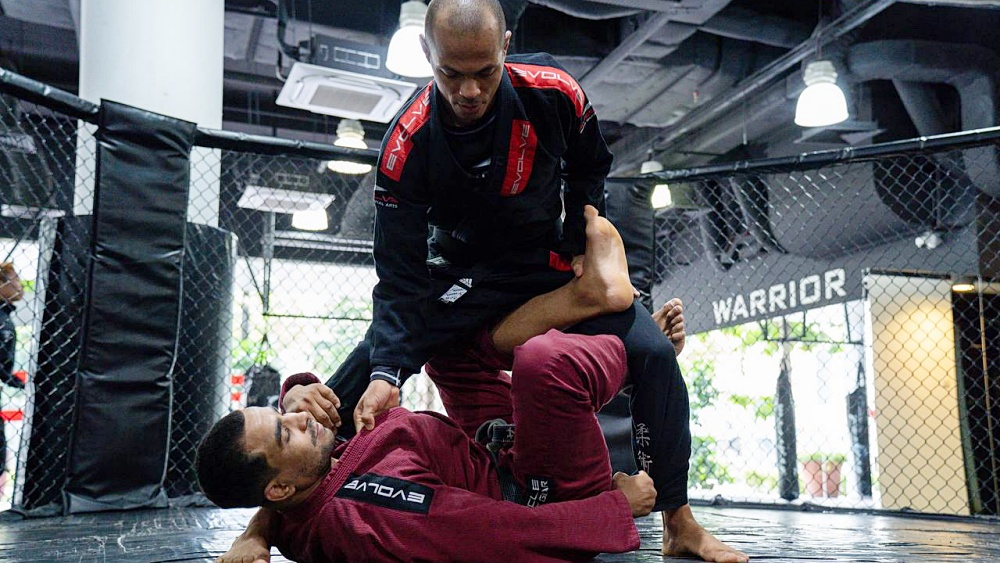As Brazilian Jiu-Jitsu evolves, the guard and guard passing are constantly in a race to get ahead of each other. Innovative ways to play the guard and connect them with other guards to enter leg entanglements are common ways the guard is used in the modern meta of the sport. This is why guard passers must stay vigilant and discover ways to overcome it. However, to elevate your game, you must become proficient in both aspects of grappling. Today, we will introduce you to a modern way of passing the guard in BJJ, the float pass.
Float Passing Defined
There are different ways to pass the guard in BJJ. Different passing styles can work effectively against certain guard variations while being easily countered or neutralized against others.
This can be challenging to some grapplers as guard passing techniques should be used interchangeably depending on the type of guard you’re trying to pass. Adapting your game solely to one kind of guard passing can sometimes put you at a disadvantage, which is why it is essential to learn the different guard passing variations and move in between.
Float passing allows you to nullify the opponent’s guard, allowing you to move around while putting pressure and bypassing the opponent’s legs in different ways. This passing style lets you switch between guard passes while riding the opponent’s legs to force a pass. Remember how you balance and move your weight on top of the opponent when performing this pass; it is vital.
Float passing is typically used between the knee-cut pass and the smash pass. Assuming you’re in the headquarters position, the opponent’s leg can be central and stiff, preventing you from transitioning to the knee cut and smash pass. This is usually the situation when facing bigger grapplers with larger legs.
In such an instance, you must ride the opponent’s hook from the headquarters position and assume that the opponent is like a climbing frame. Rather than forcing their body in different directions, like in the knee cut and smash pass, you can maneuver yourself around them instead.
You have to switch the angle of your hips by twisting your body at an angle to encourage the opponent’s headquarters leg to go across and not upright. Fully commit yourself to the movement while taking the weight and pressure off your opponent by twisting your body so their frames move past you. If the opponent fully extends their headquarters leg by kicking through, you move your body to the side as you switch hips, so you’ll be on the other side of the hook.
In the floating pass, you must have both arms based on the mat, typically below the opponent’s armpit. Keep your arms locked out (stiff arm) and not bent out to conserve energy and strength. Base your arms on the mat and keep your chest heavy on the opponent’s leg. Tuck your knee underneath the opponent’s headquarters leg just like in the smash pass, and elevate both your heels, floating on the opponent. From this position, you can reach back behind the opponent’s headquarters leg using your top leg and kick it below their hip, allowing you to control their lower body.
Another option is to move your hips back fully, putting your knees all the way behind, after moving your heel up and floating. From there, land on the mat and re-tuck for the pass. Likewise, when your hands are based, tuck in your knee behind the opponent’s headquarters leg and prepare for the smash pass. If you get stuck on their hook and can’t drag your weight all the way to smash the opponent’s leg to one side, go back to perform the knee-cut pass.
In summary, if the opponent’s leg is central (upright), tuck your bottom leg and elevate your heels, giving you two options. The first option is to rotate and take your top ankle back, kick the opponent’s leg, and land behind their bottom leg. Bring your knees tight like in a leg drag finish.
The second option is to fully take your hips backward and pull your knees behind, bringing your body behind the opponent’s legs, allowing you to re-tuck to the opponent’s hip line. The idea is to stay loose for a moment to move around the opponent’s body and tighten back once you’re ahead of their hips to land in a leg drag position, giving you strong control, ensuring that their knee can’t go back on and enter the headquarters position. Watch the above video by Brian Glick demonstrating various floating pass variations to pass the butterfly guard.
Floating Leg Pummel
As John Danaher suggests, the best way to pass the guard is to force the opponent to half-guard. That being said, you can use the floating leg pummel to force the opponent into a half-guard situation. When you can’t create an angle on the opponent to pass the guard, an excellent way to operate is to use one leg and place it between the opponent’s legs and one outside.
Doing so allows you to float over the opponent. This creates a situation where you can pummel your foot to the inside position. From here, often, as the opponent goes to defend themself, you may feel like finishing the pass may be difficult, but beating one leg can be less challenging.
The opponent can move you around in this floating position, but you can use your base and balance to keep afloat. As you move around using your balance, extend your leg and beat their trapped leg. If you feel the opponent has powerful hips or two hands on your knee, preventing you from passing, you can keep the float and sit down to the half guard.
Conclusion
Float passing can be an exciting approach to pass the guard, but it comes with certain risks, such as getting caught in leg entanglements or opening up the opponent’s ability to wrestle up. Keep in mind that the float pass requires mobility and balance. Try to incorporate float passing and see how it fits your game, allowing you to move between guard passes.
You may also like:
















